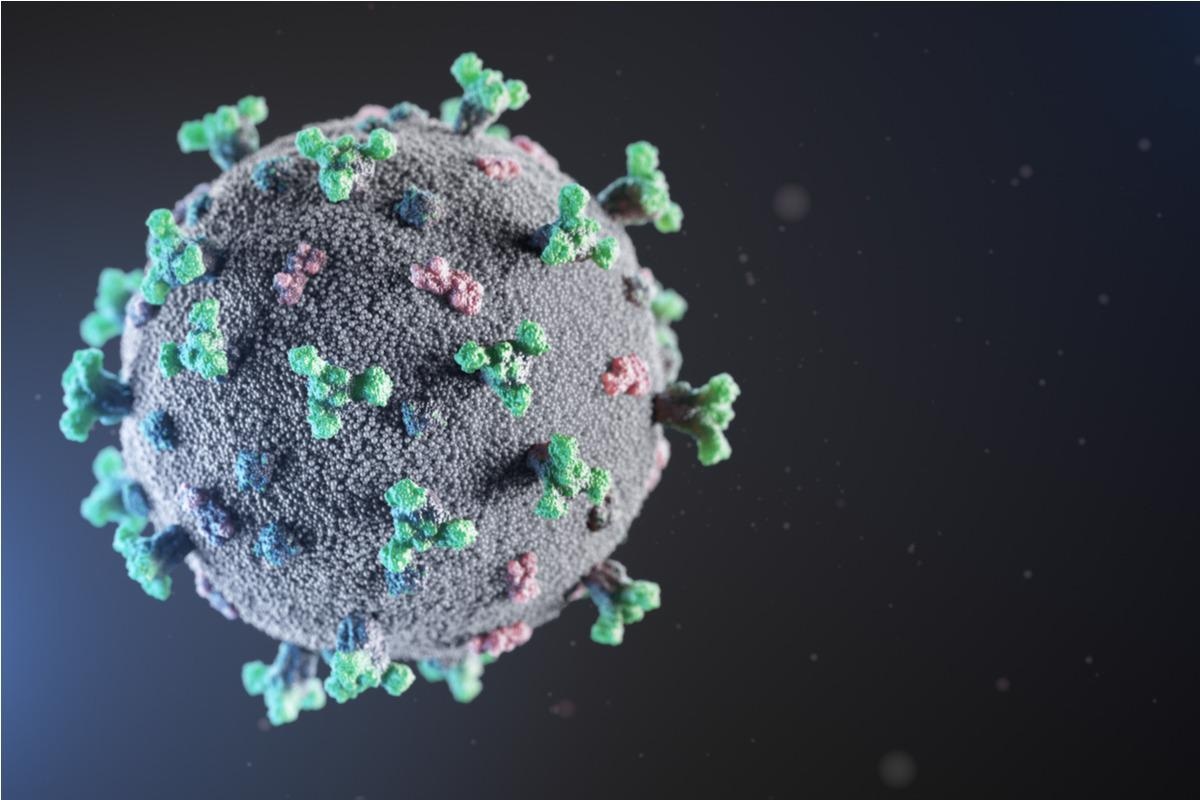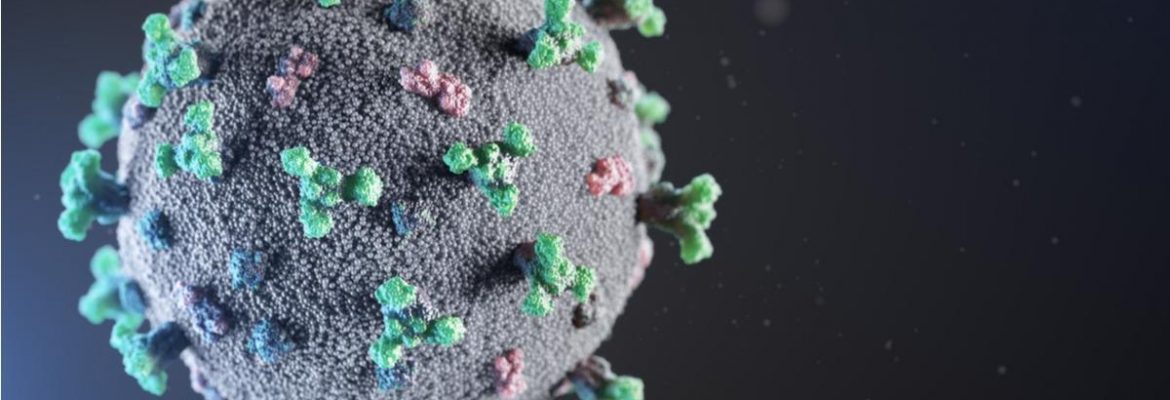Representative structures of SARS-CoV-2 and development of therapeutic agents for targeting these proteins
In a review article recently published in the journal of Signal Transduction and Targeted Therapy, a team of researchers from China summarized the representative structures of severe acute respiratory syndrome coronavirus 2 (SARS-CoV-2) proteins and discussed the development of novel therapeutic agents for targeting these proteins to treat and prevent coronavirus-disease 2019 (COVID-19).
 Study: Structural biology of SARS-CoV-2: open the door for novel therapies. Image Credit: creativeneko/Shutterstock
Study: Structural biology of SARS-CoV-2: open the door for novel therapies. Image Credit: creativeneko/Shutterstock
The emergence of multiple SARS-CoV-2 mutants by various competitive processes such as reading frame shifts and replication errors of the virus, gene re-edit, and recombination induced by host adaptive immune response, and natural selection makes it critical to identify alternative targets and develop more broad-spectrum drugs against COVID-19. Structural biology can be used to study the pathogenic mechanism of SARS-CoV-2 and provides theoretical information for therapeutic drug development and optimization.
Study
The researchers of the present study collectively identified different SARS-CoV-2 proteins. The transmembrane SARS-CoV-2 spike (S) protein protrudes from the viral surface recognizing the host angiotensin-converting enzyme 2 (ACE2) mediating viral entry into host cells. Host proteases cleaved S protein into two subunits – a receptor-binding fragment (S1) and a fusion fragment (S2).
The S1 subunit consists of an N-terminal domain (NTD), a receptor-binding domain (RBD) including a receptor-binding motif (RBM), and the C-terminal domains (CTDs) composed of CTD1 and CTD2. The S2 subunit is divided into the fusion peptide (FP), fusion-peptide proximal region (FPPR), heptad repeat 1 (HR1), central helix (CH), connector domain (CD) residues, heptad repeat 2 (HR2), transmembrane segment (TM), and cytoplasmic tail (CT).
Mutations in the NTD, RBD, and CTD region of the S protein viral genome led to the emergence of variants of concern (VOCs; Alpha, Beta, Gamma, Delta, and Omicron) and variants of interest (VOIs: Epsilon, Zeta, Eta, Lota, Theta, Kappa, Lambda, and Mu) with essential mutations including L452R, E484K/Q, N501Y, D614G, and P681H/R. Potential antibodies targeting the S protein have been developed, including NBD-, RBD-, and S2- directed antibodies. RBD-directed antibodies can be classified into seven communities (RBD-1 to RBD-7) by using epitope landscape.
The SARS-CoV-2 nucleocapsid (N) protein participates in viral replication and assembly and interferes with the interferon pathway of the host. The N protein has higher sequence conservation, is less prone to mutation, induces a stronger protective immune response in the host, and is a potential target for diagnosis. It is divided into the NTD, CTD, and a flexible linker, which is rich in serine/arginine (SR) and leucine/glutamine (LQ) residues, and SR regions play an essential role in primary phosphorylation. N protein binds to viral ribonucleic acid (RNA) and forms a ribonucleoprotein complex (RNP).
SARS-CoV-2 encodes a transmembrane envelope (E) protein, including the N-terminal ectodomain, TMD, and CTD. E proteins form the cation-selective channel in the endoplasmic reticulum-Golgi intermediate compartment (ERGIC). It aids in viral assembly, budding, and virulence and induces the host NACHT, LRR, and PYD domain-containing protein 3 (NLRP3) inflammasome.
The SARS-CoV-2 membrane glycoprotein (M) is the main constituent of the viral envelope and maintains virion size and shape. The M protein interferes with the host immune response through antagonism of interferon. Only the predicted structure of M-protein is available, which is similar to the prokaryotic semiSWEET sugar transport protein containing three transmembrane helix bundles.
M proteins comprise several motifs like aromatic-X-X-aromatic regions related to the dimerization of the M protein and the di-leucine motif located at the C-terminal tail of the M protein and interact with the N protein. Multiple cytotoxic T-lymphocyte (CTL)-related epitopes of M protein have been identified by human leukocyte antigen (HLA) molecules, such as Mn2 and Md3, located in the TM region. They all stimulate the host to produce a specific CD8+ T cell immune response.
SARS-CoV-2 encodes 16 non-structural proteins (Nsp1–Nsp16), which form the replication and transcription complex (RTC). Nsp3, Nsp4, and Nsp6 – the transmembrane proteins – induce the formation of double-membrane vesicles (DMVs) by the hijacking and rearrangement of the host endoplasmic reticulum membrane
According to the study, SARS-CoV-2 encodes nine accessory proteins – open reading frames 3a (ORF3a), ORF3b, ORF6, ORF7a, ORF7b, ORF8, ORF9b, ORF9c, and ORF10 – which play an important role in virus-host interactions, affecting innate immunity of the host, apoptosis, autophagy, and virulence. So targeting these accessory proteins to interfere with virus-host interactions is also a novel approach for treating COVID-19.
The ORF3a protein attaches to host heme oxygenase (HMOX1) which exerts important anti-inflammatory effects through the NLRPS pathway. Compounds inhibiting the interaction of ORF3a with HMOX1 is an effective strategy for COVID-19 treatment. The ORF7a protein is an important therapeutic target against COVID-19 and activates nuclear factor kappa B (NF-Κb) signaling. It inhibits the formation of type-I interferon and blocks signal transducer and activator of transcription (STAT2) phosphorylation.
ORF8 is a multifunctional protein that induces host cell apoptosis, suppresses the host innate immune response by downregulating the class I major histocompatibility complex (MHC-I)-mediated viral antigen presentation, and functions as an antagonist of type-I interferon (IFN). Therefore, ORF8 is considered a potential antiviral target.
Conclusion
The severity of the ongoing COVID-19 pandemic has highlighted an urgent need to develop effective therapeutic antiviral drugs, vaccines, and antibodies. This study summarizes the representative protein structures of SARS-CoV-2, structure-based drug design using these proteins, and potential therapeutic drugs that target SARS-CoV-2 proteins. This review provides theoretical insights and opens the door to mitigating the current COVID-19 pandemic and potential future COVID-19 outbreaks owing to numerous emerging SARS-CoV-2 variants.
-
Yan, W. et al. (2022) "Structural biology of SARS-CoV-2: open the door for novel therapies", Signal Transduction and Targeted Therapy, 7(1). doi: 10.1038/s41392-022-00884-5. https://www.nature.com/articles/s41392-022-00884-5#content
Posted in: Medical Science News | Medical Research News | Disease/Infection News
Tags: ACE2, AIDS, Angiotensin, Angiotensin-Converting Enzyme 2, Antibodies, Antigen, Anti-Inflammatory, Apoptosis, Arginine, Autophagy, Cation, Cell, Coronavirus, Coronavirus Disease COVID-19, covid-19, CT, Drugs, Enzyme, Gene, Genome, Glutamine, Glycoprotein, Helix, Human Leukocyte Antigen, Immune Response, immunity, Inflammasome, Interferon, Leucine, Leukocyte, Lymphocyte, Membrane, Mutation, Omicron, Pandemic, Phosphorylation, Protein, Receptor, Respiratory, Ribonucleic Acid, RNA, SARS, SARS-CoV-2, Serine, Severe Acute Respiratory, Severe Acute Respiratory Syndrome, Structural Biology, Syndrome, Transcription, Virus

Written by
Susha Cheriyedath
Susha has a Bachelor of Science (B.Sc.) degree in Chemistry and Master of Science (M.Sc) degree in Biochemistry from the University of Calicut, India. She always had a keen interest in medical and health science. As part of her masters degree, she specialized in Biochemistry, with an emphasis on Microbiology, Physiology, Biotechnology, and Nutrition. In her spare time, she loves to cook up a storm in the kitchen with her super-messy baking experiments.
Source: Read Full Article
